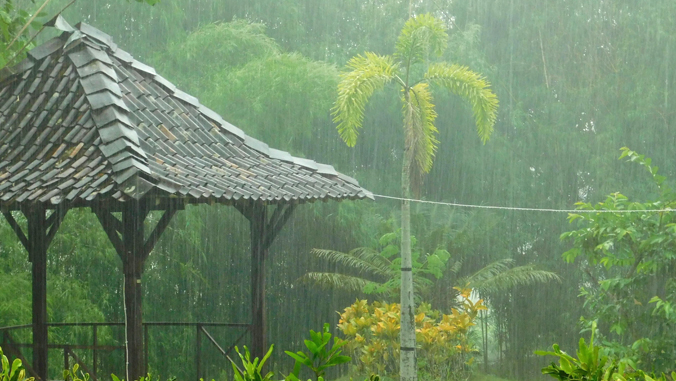

A new study from the University of Hawaiʻi at Mānoa revealed that a lesser-known Pacific climate pattern can bring heavier spring rains—and a higher risk of flooding—to parts of Hawaiʻi, while also playing a key role in worsening droughts during dry phases. An example of this happened in the spring (March–May) of 2018, in which this climate pattern contributed to an extensively rainy season.
Most people know about El Niño-Southern Oscillation (ENSO), which is known to have a significant impact on climate across the Pacific, including Hawaiʻi, and adjacent continents. However, new research led by UH Mānoa atmospheric scientists revealed that the Pacific Meridional Mode (PMM), another climate pattern that operates in the eastern Pacific Ocean, plays a major role in the variability of rainfall in Hawaiʻi. Their study was published in the Journal of Climate.
They determined that in spring, a “positive” PMM state precipitates extensive rainfall across the state, specifically, greater rainfall throughout the islands occurs as cold fronts move through. Additionally, whether the positive state occurs in winter or spring, the result is that the leeward sides of the Hawaiian Islands experience an increase in extreme rainfall events, suggesting a heightened risk of floods. Their analysis also showed that a “negative” state of the PMM corresponded with reduced daily rainfall over windward sides of the islands, potentially exacerbating drought occurrences.
Population growth, increased demand for water
As the state of Hawaiʻi experiences population growth, the demand increases for water for drinking, food production, agriculture, recreation, construction, medical uses and more.
“This uncertainty in interannual rainfall, together with the increasing demand for water, requires us to better understand the relationship between rainfall and climate variability. We aim for our research to empower our communities with climate and weather information,” said Pao-Shin Chu, study co-author, professor of atmospheric sciences in the UH Mānoa School of Ocean and Earth Science and Technology (SOEST), and Hawaiʻi State Climatologist.
During the positive state of the PMM, weaker trade winds in the northeast Pacific Ocean between Hawaiʻi and Baja California occur along with increased sea surface temperatures. During the “negative state,” stronger trade winds and cooler surface temperatures prevail.
Chu and lead author Bo-Yi Lu, who was an atmospheric sciences doctoral student in SOEST at the time of this research, performed diagnostic analyses using a combination of actual weather and sea surface observations, and weather model-generated data to determine how these patterns affect rainfall variation.
“Our study suggests that although El Niño emerges as the primary driver of winter rainfall variability in Hawaiʻi, the Pacific Meridional Mode has a pivotal role in spring rainfall, particularly for Maui and the Island of Hawaiʻi,” said Chu.
“Importantly, our analysis disentangles the respective roles of ENSO and the PMM in driving rainfall variability across seasons and types of weather disturbance in Hawaiʻi,” said Lu. “These findings not only deepen our understanding of regional climate dynamics but also offer valuable insights for water resource management and disaster preparedness in Hawaiʻi and beyond.”
—By Marcie Grabowski

